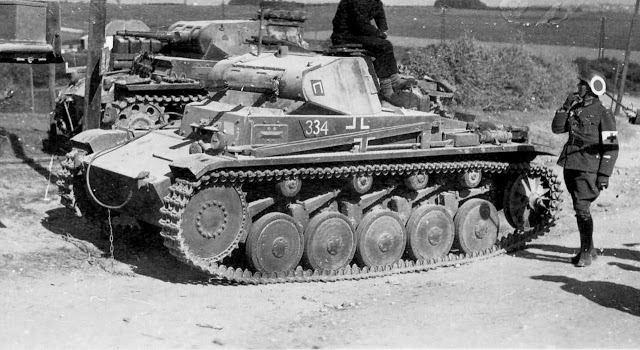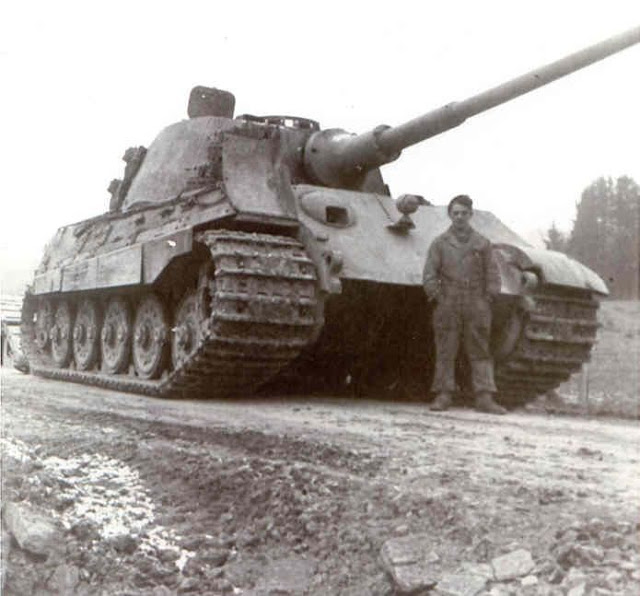World War 2 Starter
Light Tanks
Panzerkampfwagen I Ausf A
The Panzer 1 was the first practical German Panzer before ww2
it was produced in the 1930s. Panzer 1 is the first German light tank,
during testing the panzer 1 was fast and maneuverable, and easy to maintain.
However, the tank was lightly armed and lightly armored when it was deployed
into the front it was easily destroyed by the French Char B1c tank. The tank only weighed 5.4 tons and armed only
with two 7.92mm MG 13, the tank saw combat in the Spanish civil war, world war
2 in china, world war 2 in Europe, and North African campaigns and against the
east. The tank saw extensive use during the war.
Panzerkampfwagen II Ausf C
The Panzer 2 was the improved version of the Panzer 1 it was
better armed and better-armored light
tank. The Panzer 2 was developed on 27th
of January 1934. It was equipped with the 20mm anti-tank
Panzerkampfwagen III Ausf H
The Panzer 3 is unlike the previous tank models, the Panzer 3
was developed in the 1930s. The Panzer 3 was the new German tank type; it was a
medium tank and a light tank. The Panzer 3’s armor is 15mm on all sides, making
it still vulnerable to enemy anti-tank guns and rifles. But it was armed with
the 37milimetre PaK 36; the late versions were upguned with the longer and
powerful 5cm KwK 39 L/60 used on a Panzer 3 Ausf J.
Panzer 35(T)
The Panzer 35T is a Czechoslovakian designed light tank used mainly in Germany, there were 434 of these were built. The tank is armed with the 3.7 cm KwK 34 gun. The armor of the tank is good, turret and superstructure are 25mm thick 15mm thick on its sides and rear but only 8mm for the top and bottom armor, but the hull’s side was 16mm and 19mm at the rear.
The tank is
powered by a 4 cylinder water-cooled Skoda T11/D gasoline engine that can
produce a power of 120hp or 89kw, the suspension of the tank it used is the
Leaf spring suspension. With a fuel capacity of 152 liters the tanks, operational ranges are 120-190km with a maximum speed of 34km/h.
Panzer 38(T)
The Panzer 38T was the successor of the Panzer 35T; the tank was upgraded and replaced the hull design and turret. The tank was upguned with the 37mm KwK 38T L/47.8, the armor of the early version is 8-30mm thick and the late version was 8-50mm thick. The Tank saw extensive use in Germany; the tank is light only 9.85 tons.
Even if the tank only weighed light the tank’s narrow
tracks made it difficult to cross terrain because it doesn’t have enough traction.
The engine is used as the Praga Typ TNHPS, water-cooled, 6 cylinder gasoline
engine that can generate power up to 123.3hp (123 PS, 91.9). The suspension is
used is the same as the previous model of the tank, with a fuel capacity of 220
liters the tanks operational ranges are 250km on road and 100km on cross
country.
Medium Tanks
The Workhorse of the German Army
Panzerkampfwagen IV Ausf G and H
The Panzer 4 was the successor of the Panzer 3; the Panzer 4 was developed in the late 1930s. The tank saw extensive use throughout the war. The Panzer 4 was armed with the powerful 7.5cm KwK L/24 gun which is very powerful on its time. It was armored 20 up to 30mm thick. When the Panzer 4 was deployed on the eastern front, they encountered the soviet T 34 tanks and KV 1s. The Panzer 4s fight desperately to the T 34s and KVs, outmaneuvering the enemy always works for the Panzer 4’s high-speed maneuvering ability.
But still, they
had to develop a tank that can counter these threats, but the new tank was
still on the drawing board. So they have to strengthen the Panzer 3s and 4s,
upgunning the Panzer 4 with the powerful 7.5cm KwK 40 L/48 gun and add armored
side plates placed on both sides of the hull and turret. It was the result of
the new and powerful tank the Panzer 4 Ausf H.
The Panzers That Struck Fear On To the Allied Tankers
Panzerkampfwagen V Ausf D “Panther”
The Panther tank was developed in the 1940s along with the Tiger 1; the Panther was a new design tank with sloping sides to deflect shells inspired by the soviet T 34. Its frontal armor was 80mms thick and 40-50mms thick on its sides, the Panther’s gun was the more powerful Rheinmetall-Borsig 7.5 cm KwK 42 L/70 that can destroy any allied tank on its time. The Panther tank was very mobile and only weighed 44.8 tons making it very fast and maneuverable.
When the Panther was deployed on to the eastern front, the Soviet
tankers were shocked because of its impressive armor and excellent mobility.
But when the Soviets knew about the weaker side armor, they immediately trained
their tankers on how to destroy this panther, when the arrival of the T 34/85
the Germans again consider the Panther weak, because the newer T 34 can now
destroy the panther.
Heavy Tanks
Panzerkampfwagen VI Tiger Ausf E “Tiger 1”
The Tiger 1 was developed in 1942 the Tiger 1 was a year earlier than the panther. Tiger 1 was first deployed in Tunisia North Africa with its appearance shocking the British forces; the British tankers cannot penetrate the Tiger even in close ranges.
The Tiger 1 was armed with the powerful 8.8cm KwK 36 gun or the 88mm that was used intended to be an anti-tank and air gun, the gun’s accuracy was very impressive and can destroy any known allied tanks at a distance of up to 2km. The Tiger 1’s frontal armor was 100mm thick 80mm thick on its sides and rear in both hull and turret, with an impressive armor thickness it was nearly impenetrable to any allied guns and the allies had to develop a tank and gun that can counter the Tiger 1.
The
Tiger 1 was very effective and many of the Tiger commanders became tank aces
because of this tank, but the tank came into a series of technical drawbacks.
Because the Tiger 1 came into a rush design, some of the tank elements are
breaking down in the battlefield making it very vulnerable. The tank is
underpowered, the engine was designed to power a 35-ton tank only not a 57 ton
Tiger. With a weight of 57 tons the Tiger can easily get stuck in the mud, the
Tiger 1 continued to fight until the fall of berlin. Some rare variants include
the command Tiger with a new and better radio and the Sturmtiger which is
equipped with a large self-propelled mortar that can fire a rocket.
















0 Comments